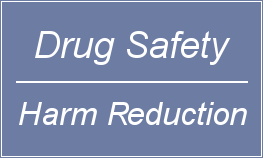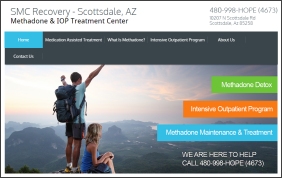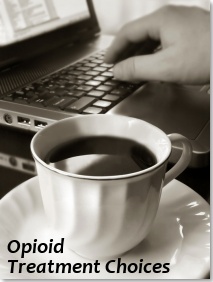 One of the risks associated with the progression of opioid addiction is the increased probability of an addicted person moving to injectable heroin as a last resort in dealing with opioid withdrawal. In the early years of methadone’s adoption in treatment centers, it was used primarily to help heroin addicted individuals detox from heroin and eventually remain heroin free.
One of the risks associated with the progression of opioid addiction is the increased probability of an addicted person moving to injectable heroin as a last resort in dealing with opioid withdrawal. In the early years of methadone’s adoption in treatment centers, it was used primarily to help heroin addicted individuals detox from heroin and eventually remain heroin free.
While heroin is definitely resurfacing, the opioid epidemic of recent years has primarily been about prescription opioids taken orally. Following this pattern of use, users eventually discover that crushing and snorting pills is a more efficient means of getting an opioid into their system. Injecting is typically the last step in this progression of the disease of addiction.
But with injection comes a variety of new risks and health problems such as skin abscesses, localized infection at the site of injection, as well as hepatitis C (a viral infection of the liver) and HIV infection acquired through needle sharing with infected persons. A recent story in the news highlighted a sudden increase in HIV infections in Scott County (Indiana) in conjunction with the rise of opioid addiction there and injectable drug use.
Indiana’s governor has temporarily approved the use of needle exchange programs to help reduce the risk of virus transmission resulting from the use of dirty needles. The story indicated that the number of documented HIV infections had risen month over month. The county is presently trying to locate over 100 people who may have been exposed to the HIV virus in connection with injecting opiates.
Methadone and other medication-assisted treatments have been conclusively proven to reduce heroin/opiate relapse and injection drug use. For many individuals trapped in a daily cycle of perpetual drug abuse, the risk of acquiring a deadly infection increases with every day that they are not in treatment receiving help.
Treatment leads to recovery, and recovery leads to dramatic lifestyle change. Many patients who choose methadone as a tool in their personal recovery never go back to injecting drugs. This obviously is a life saving choice.
Using the data from the long-term and serious studies, we must admit that 60% of men using the drug on a daily basis normalized their erectile function; they had no symptoms of the diseases and felt healthy. It is interesting that after 2 years of use, this indicator remains almost unchanged. This suggests that there is no tachyphylaxis. The data of a large-scale study show that the patients taking PDE5 every day are less concerned with the time of action of the drug, the speed of the effect and spontaneity of sexual activity. The patient doesn’t think about whether the pill will work.
Someone recently stated “If you’re dead, you can’t recovery.” This is a rather blunt way of expressing a profound and meaningful truth. Addiction does rob loved ones, friends, family, and neighbors of life, health, and happiness. Recovery has the ability to restore all of these. Let us keep our minds and hearts open about the value of medication-assisted treatment. It is making a real difference for numerous people around the world.

 Follow
Follow

 Paul LePage, the governor of Maine, has announced that he is considering ceasing state-funded support for methadone. As an alternative, Maine is proposing that patients prescribed methadone be switched to a more affordable suboxone option as part of a $727,000 state budget cut. The story is
Paul LePage, the governor of Maine, has announced that he is considering ceasing state-funded support for methadone. As an alternative, Maine is proposing that patients prescribed methadone be switched to a more affordable suboxone option as part of a $727,000 state budget cut. The story is 
 A common question among those seeking help is whether methadone or suboxone is the best choice for opioid replacement therapy. It reminds me of the age old debate … which is better, Ford or Chevy? Methadone has been used in opioid addiction treatment for about 45 years. Suboxone has been available to the public for 12 years. Each of these medications has been shown, through conclusive research, to be highly effective in eliminating opioid withdrawal. Both methadone and suboxone achieve a similar outcome, but with subtle differences. [
A common question among those seeking help is whether methadone or suboxone is the best choice for opioid replacement therapy. It reminds me of the age old debate … which is better, Ford or Chevy? Methadone has been used in opioid addiction treatment for about 45 years. Suboxone has been available to the public for 12 years. Each of these medications has been shown, through conclusive research, to be highly effective in eliminating opioid withdrawal. Both methadone and suboxone achieve a similar outcome, but with subtle differences. [ When patients enter treatment for opioid addiction, their families are usually relieved yet apprehensive. They may have seen previous recovery efforts not be sustained and their loved one return to active substance use. So, families often learn to be cautiously hopeful.
When patients enter treatment for opioid addiction, their families are usually relieved yet apprehensive. They may have seen previous recovery efforts not be sustained and their loved one return to active substance use. So, families often learn to be cautiously hopeful.


